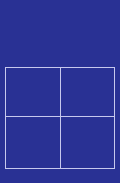|
|
|
|
| HERMITAGE OF SANTIAGO |
| |
HERMITAGE OF SANTIAGO
To about seven hundred meters, to the East of the inner city of Agüero, a splendid building of Romanesque style rises that always has been had like hermitage of this town, although its magnificence denotes that its condition of hermitage is only one purely topographic impression.
The building is belongs to the century XI. It consists of a set of three apses that are opened to other so many spaces that constitute the first section of the three naves of the temple. This first section was closed precipitately with a wall that covers the three archs which communicate the parts of this first section. This first section was covered with three barrel vaults tracked and perpendicular to the apse that corresponds to it. In the South side of this first section the entrance door which let you go into to the temple was opened and it has been recently recovered by Beautiful Arts with great success.
The tracked barrel vaults are in several works of the Five Villas and the same type of absidial cover -the vault on 10 nerves- has the church of Saint Mary in Ejea de los Caballeros. Also there will be connections between these zones in the sculpture of the hermitage of Santiago in Agüero, a build of great importance and next to the transition to the gothic one.
The tympanum of the South cover is unique and it presents a beautiful Epiphany. It is supported on two "modillones" carved in form of a "andrófago" animal. In it you can see a man and a woman and the the scene of the Adoration of the Magicians. Agüero offers a precious precedent for the Epiphanies of the Italian Cuatroccento. The same tympanum , with the same subject, we can see in the church of Saint Michael of Biota and in the one of Saint Nicholas of Frago, both in the region of the Five Villas.
In this cover there is a precious collection of nine capitals that were placed in two phases in which we can see scenes of centaurs, fierce devouring its prey, fights of horsemen and the most famous subject of the dancer. In the inner part of the cover also we can see scenes of fights between soldiers. They are fights in which the Muslim soldiers are wearing a round shield and the Christian ones are wearing a pointed shield. Both soldiers ride a horse. The famous dancer is a work that can serve like signature of the known Master of Agüero. This teacher is out of all proportion to the well-known Master of Saint John of the Rock. It is a frequent subject in some towns of the Five Villas like Biota, El Frago, Ejea, in a capital of the church of Saint Peter the Old of Huesca and in a scene of the Romanesque apse of the Cathedral of The Seo of Zaragoza. The dancer represents to Salomé and it appears to us in two types: one initiating the dance with a harpist and the other in an attitude incredibly distorted with the free hairs and accompanied by a small soloist with a pointed cap.
In the interior of the temple, in the central apse there is an arcade of blind archs that tries to suppress the unsightly of the wall. There there are decorations preferredly of geometric tastes in which elements of figurative type are introduced: monsters holding grapevines, heads, a peculiar face in the second capital of the right and abundant geometric samples of tieed, opened circles or with closed knot.... that seem to us similar and of the same hand that the identical details that cover of the church of the Five Villes of Puilampa. In this chuch worked the Master Bernardine and it was finished before 1.191.
|
|
 |
|
View of the inner of the Hermitage |
In the outside of this central apse there is a impost with some sculptures that is responsibility of the same person who made the interior one which is located in the apse of the Epistle. This inner frieze which has hardly fourteen centimeters of height, narrates a serie of scenes of the life of Christ, more concretely of his Childhood and his Birth. All the scenes are framed between leaves and fruits whose curves create a certain rate that generates a movement sensation. The represented scenes are: the Announcement, the Visitación, the Birth, the Cavalcade of the Magicians towards Bethlehem, the Adoration of the Boy by the Magicians, the warning of the angel, the presentation of the Cryst in the Temple. It follows a complete piece dedicated to the Innocent Saints with Herodes ordering the soldiers the slaughter and with the aid of some wise people who scrutinize the birth of the Mesías in old books. We see next the warning from the angel Saint Joseph and the march of the Sacred Family, from return to Israel, with which the cycle of the childhood of Jesus would be closed.
"Canetes and the capitals of the interior of the hermitage which has relation with capites that there are in the church of Saint Domingo of Calzada complete the historical set of the temple.
|
|
|
|
 |
|
|
|













